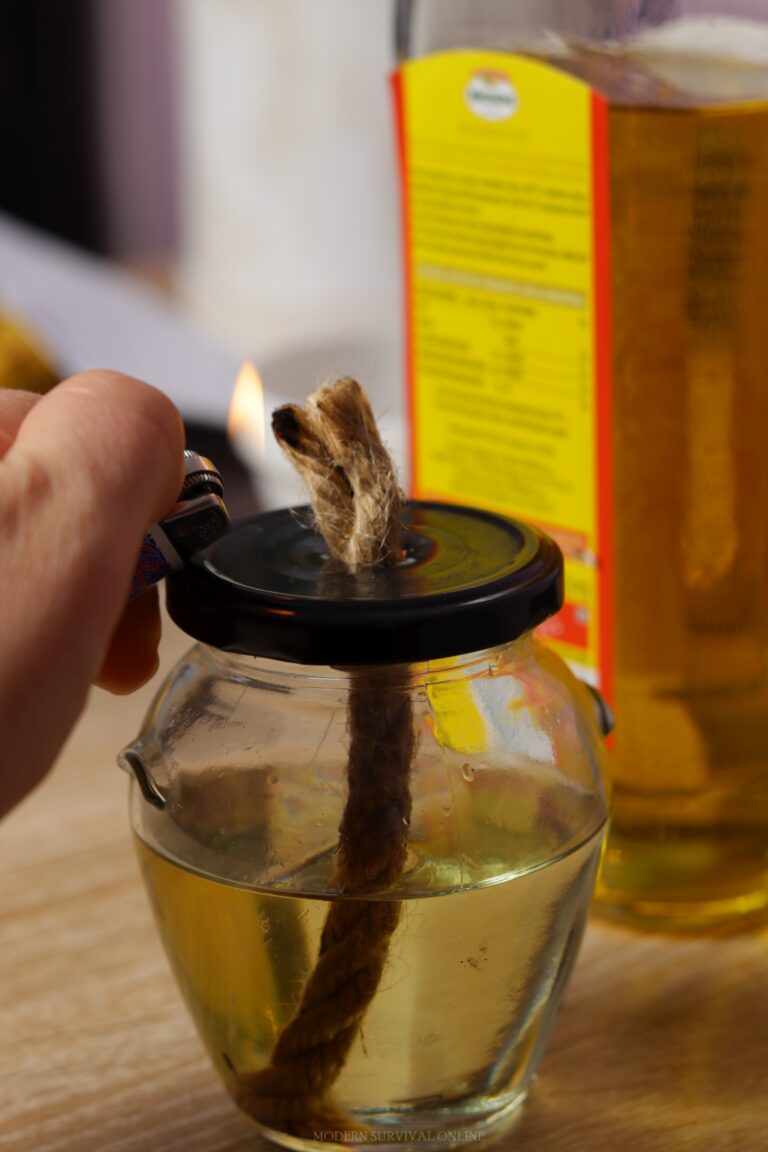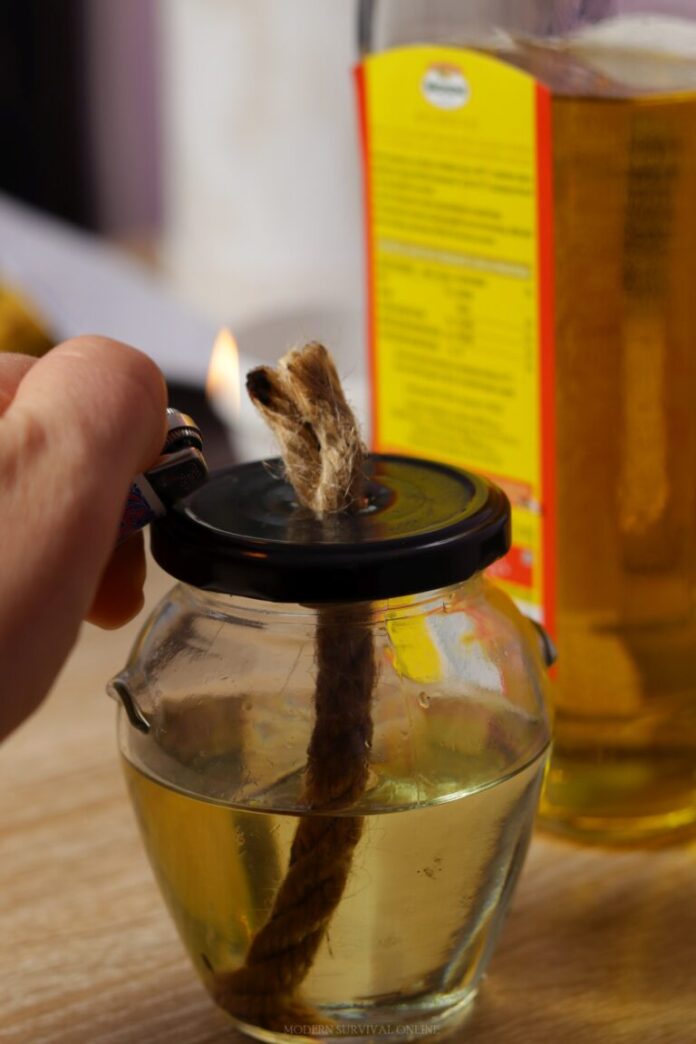The use of oil to provide in-home heating used to be far more common around America than it is today, though there are still many cities and northern regions that rely on this old standby.

Compared to electric heat, oil heating has advantages and disadvantages, but the obvious drawback is that the oil must be stored on-site in a large above or below-ground tank.
If you run out of oil, no more heat, and that might spell disaster in the middle of winter.
Naturally, it’s critical that you understand how far your oil supply will go so you don’t run out. How long can you expect your heating oil supply to last?
On average, a 275 gallon to 300 gallon tank of heating oil will provide anywhere from 1 to 3 months worth of heat for an average home depending on climate, the condition of the house, and furnace.
This calculation, as one would expect, has many variables. Unless you are content spending a bundle on heating oil or you have a reliable backup heating system in your home, maybe a wood stove or fireplace, you definitely don’t want to risk running out.
This article will tell you what you need to know in order to figure out about how much heating oil your home will use.
Many Factors Affect Heating Oil Consumption
The first thing you need to know is this: there is no hard and fast formula you can rely on to accurately ascertain how much heating oil your home will use.
It’s not a simple matter of multiplying height by width or determining air volume or anything like that. Very literally, it’s more art than science.
The best advice I can give you up front is to actually measure how much oil your furnace consumes in a given period of use- say a week’s worth. If your tank has a visible fuel gauge, take accurate readings with it.
Alternately use a marked dipstick or some other device that can help you determine consumption. Only by getting actual data for typical usage can you start to establish a baseline.
Then, we can do a little investigation and detective work. The following factors are ones that will influence how much oil your furnace consumes to provide a given amount of heat.
By correcting problems and reducing other variables, you can use less heating oil.
Poorly Maintained or Dirty Furnaces Use More Oil
Just like anything else in life, a properly maintained machine will work better and more efficiently. The same goes for your oil furnace.
Generally, older furnaces that are in poor repair are going to use more oil. Newer furnaces, ones with modern features, typically use less especially if they are well maintained.
Whatever the vintage of your furnace, keep it cleaned, inspected and maintained when required.
Giving them a periodic tune-up, even if it’s not strictly required, will prevent it from turning into a gas guzzler, or rather an oil guzzler.
You might be surprised at how much oil you can save with your older furnace if you take the time to get it cleaned up, tuned up and potentially upgraded.
Contaminated, Leaky Oil Tanks Mean Wasted Oil, and Loss of Efficiency
Your next area of interest should be the oil tank itself. The most obvious concern with an oil tank is that it is leaking, as a slow leak is going to cost you oil, and that means money, over time whether or not the furnace is running.
Combine a slow leak in a tank with a poorly maintained and inefficient furnace, and the stage is set for you to go through tons and tons of oil.
Also, if at all possible have the tank fully inspected. Large rust deposits, other corrosion and various kinds of slimy or sludgy contamination can impact the performance of your oil, robbing your furnace of efficiency and also accelerating wear and breakdown of the furnace itself.
In any case, contaminated oil is not going to give you as much heat as it would normally, further robbing you of efficiency.
If you have an older home with a massive underground tank, this could be a very expensive undertaking to have it inspected and serviced.
It is something that you should consider especially if you’re going to be staying in your home for the indefinite future.
What’s the Weather Like?
The next thing you should consider is what the weather is like when you are running your furnace.
Of course it’s cold, that’s why you have an oil furnace in the first place, but how cold are we talking about?
New England and Canadian Winters are fantastically harsh in many places, and the more frigid the climate is, and the longer it stays that way, the more oil you are going to need in all circumstances. That’s just the way it is.
Conversely, mild, short winters mean you can get by with less oil, especially if you are willing to implement other procedures and tips on this list.
Something to consider is that your average rate of consumption concerning temperature is not a linear equation.
All things being equal, once you reach about 55 °F (12 °C), every 10 °F below that you drop means you’ll be consuming more than double the amount of heating oil to keep the inside of the home at a livable temperature.
Bigger House Means More Oil Consumption
Another obvious factor, and one that you should still account for, is the size of your home.
We’re all probably familiar with this one, because the larger your home the more money you’re going to spend on heating and there’s not much you can do about it.
Other things to consider are tall ceilings in rooms, which means that much of your hot air coming up out of the vents is going to rise uselessly towards the ceiling instead of staying down low where the people actually are.
If you have a multi-story home with tall ceilings you’re going to need a heck of a lot more heating oil than a compact, low-ceiling ranch home.
There’s not a lot you can do to offset an inefficient basic design of your home, but you can possibly change the way you live in your home to good effect.
More on that in a minute.
Drafty Homes Lose Heat Fast, Meaning More Oil is Needed
Before we get to in-home lifestyle changes, we need to look at home maintenance. The single biggest killer when it comes to your heating bill is drafts.
If you are letting cold air in or hot air out, around leaky windows, under and around doors, through poorly insulated walls, etc. You are quite literally putting a match to your money.
It isn’t fun and it’s often tedious work, they’re not difficult, but you should make it a point to ruthlessly hunt down every cool spot and every draft in your home and deal with it.
Applying caulking and weather stripping is so simple a child can do it, and doing quality insulation work is a lot easier than the professional price tag would suggest.
Also consider using rugs, drapes, and other materials that can help stop drafts and hold in heat.
When is and How is Your Home Occupied?
The occupancy status of your home makes a difference to the rate of heating oil consumption.
With a modern electric controller or even an older analog one, if you care to turn down the thermostat when you and your family are away you can save a ton because you won’t be drastically heating an empty house.
If you are using an analog thermostat that means you’re going to have to deal with a chilly house when everyone is coming home, but modern ones can be set to start warming up the house shortly before you arrive.
Similarly, if you or the family spends most of the time in one room consider shutting off vents and registers in unoccupied rooms to further increase the efficiency of heating fewer spaces.
Care to Bundle Up?
Basic advice, but good advice: if you’re in the middle of a blistering-cold winter with 3 feet of snow on the ground outside, ask yourself why you or anyone else in the family have the expectation of running around in shorts and socks inside the home.
Put on a sweater and warm pants so you’ll stay warmer without having to run the furnace wide open 24/7 to be comfortable.
There is Always Something You Can Do to Save Heating Oil
Especially when you are dealing with seemingly insurmountable hardware problems, it is easy to just give up on saving heating oil. But that’s not the case, and there’s always something you can do.
Even if you don’t have the money for upgrades or repairs, carefully assess your lifestyle and figure out a different way to live and occupy your home in the coldest parts of the year.
Simply changing the way you live might save you a small fortune on oil, and combined with the other advice throughout this article the difference could be dramatic!


